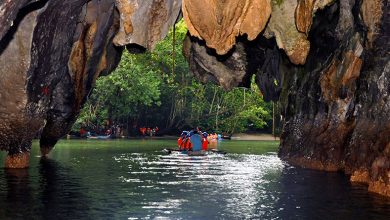Makati
To the southeast of the metropolis is the city of Makati, a well established city which has grown up since 1950 to the East of the older town. The city is bounded on the north by the Pasig River, facing Mandaluyong City, on the northeast by Pasig City, on the southeast by the municipality of Pateros and Taguig City, on the northwest by the city of Manila and Pasay City on the southwest. Makati is a site chosen by a large Filipino holding company, the Ayala Corporation, for a large modern development to make good after the destructions of the war. This former area of waste land has been developed on a large scale particularly since 1960, with many banks, business houses and multinational companies establishing their offices here, followed from 1975 onwards by a number of large hotels, the Intercontinental, Mandarin, Manila Garden, Peninsula, etc. At the center of the city is the Central Business District in which the country’s tallest skyscrapers are situated. Philippine Bank of Communication is the tallest building which reaches up 265 m. One of the most impressive sights in Metro Manila is the city’s skyline. Also situated in the city are the some of the well-known residential estates, Forbes Park and Dasmariñas. Here, too, in villages surrounded by walls and protected by armed guards a reminder of the insecurity which prevailed at the time of the Huk insurrection are the residences of diplomats, businessmen and large landowners, set in beautiful gardens and with polo grounds and golf courses in close proximity.
On Makati Avenue, opposite Makati Commercial Center, is the Ayala Museum established in 1974. It contains scale models of old ships (the Manila galleon, Chinese junks, etc.), weapons, and material of ethnographical interest, old books, etc., together with 60 dioramas that reveal significant events in the history of the country and the fine arts collections spanning from prehistory to the present, which features some of the work of great Filipino artists. Beyond the Museum is the Ayala Aviary, with beautiful orchids and tropical birds in natural settings.
Nearby is a large shopping district, the Ayala Center, located at the corner of Ayala Avenue and EDSA in Makati’s central business district. It offers recreation, shopping galore, dining and entertainment.
A short drive east along MacKinley Avenue to Fort Bonifacio is the American Cemetery and Memorial, stands as a solemn reminder of heroism of American soldiers during the World War II. Laid out by Gardner A. Dailey in 1948, this cemetery contains the graves of 17,000 American and Allied servicemen. In the centre is the circular Memorial, with a tower 20 m high decorated with carving by Boris Lovet-Lovski. In the base is a chapel with mosaics by the same artist.
Adjacent to the American Cemetery is the Philippine Military Cemetery or the Libingan ng Mga Bayani, with the tomb of the Unknown Soldier and its eternal flame as well as the headstones of Filipino statesmen.
There are great number of art galleries within the city among them are; the Luz Gallery along Ayala Avenue, features interesting art works by Filipino artists; and Osmundo Gallery in Dusit Hotel Nikko, showcases antiques furniture, Philippine saints and folk art, excavated Philippine pottery and others.
Farther on, just before Guadalupe Bridge, is the Guadalupe ruin or the church of Nuestra Seora de Gracia. The church, dedicated to the Virgin of Guadalupe, much venerated in Spain and Mexico, was founded by Augustinians in 1601. The wonder-working statue of the Virgin was saved from profanation during the British occupation in 1762 by an Irish Roman Catholic soldier who concealed it from the plunderers. The church was damaged by an earthquake in 1880 and subsequently repaired, but suffered severe damage in an American bombardment in 1899, directed against Filipino forces who had established themselves in the church. It was later rebuilt, along with a new convent and seminary.
Located at Barangay Poblacion is a church with architecture typical of colonial mission churches of rectangular single-nave plan composed of the nave, apse and sacristy. The Saint Peter and Paul Church was built in 1620.




